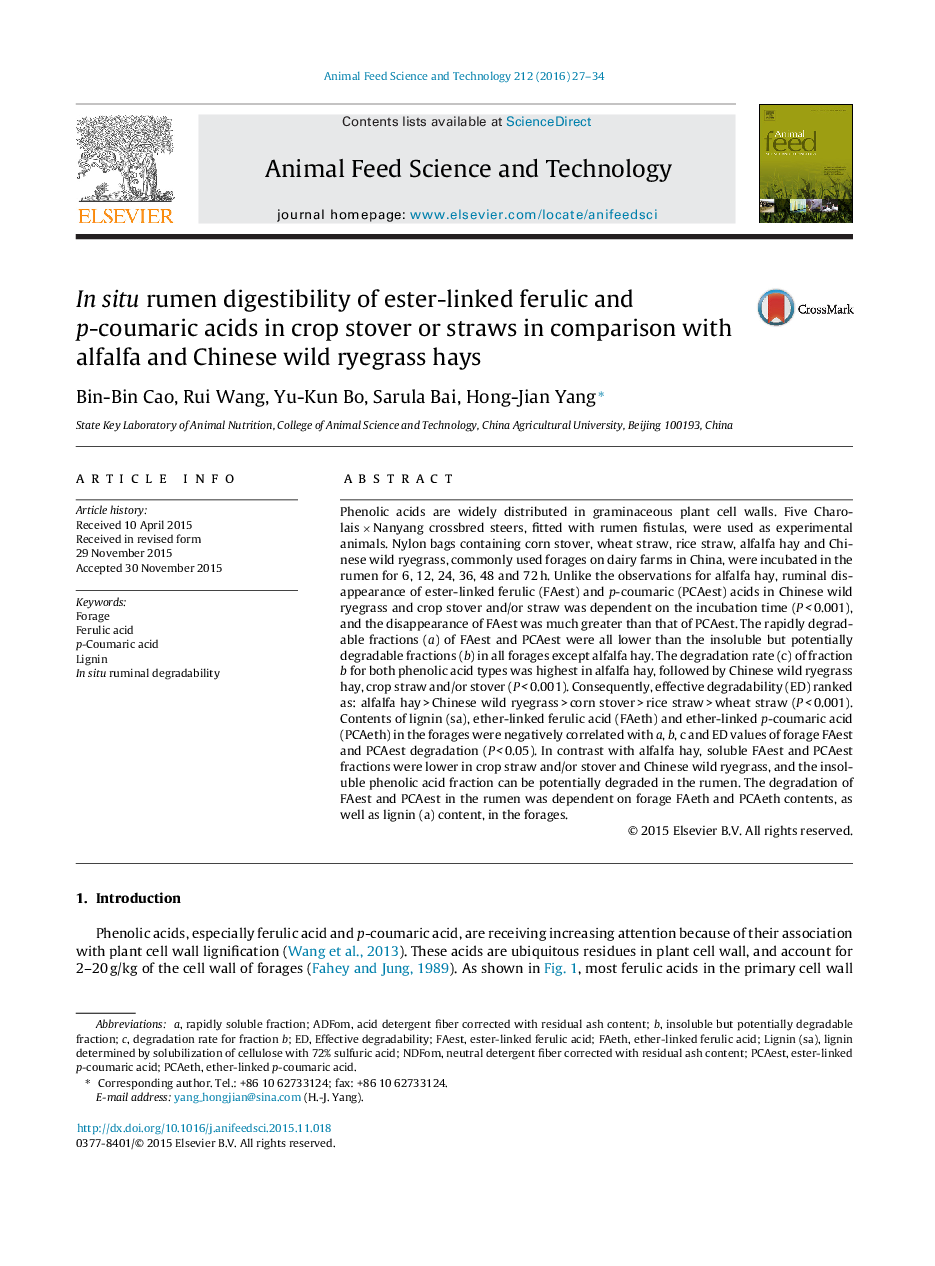| Article ID | Journal | Published Year | Pages | File Type |
|---|---|---|---|---|
| 8491271 | Animal Feed Science and Technology | 2016 | 8 Pages |
Abstract
Phenolic acids are widely distributed in graminaceous plant cell walls. Five Charolais Ã Nanyang crossbred steers, fitted with rumen fistulas, were used as experimental animals. Nylon bags containing corn stover, wheat straw, rice straw, alfalfa hay and Chinese wild ryegrass, commonly used forages on dairy farms in China, were incubated in the rumen for 6, 12, 24, 36, 48 and 72 h. Unlike the observations for alfalfa hay, ruminal disappearance of ester-linked ferulic (FAest) and p-coumaric (PCAest) acids in Chinese wild ryegrass and crop stover and/or straw was dependent on the incubation time (P < 0.001), and the disappearance of FAest was much greater than that of PCAest. The rapidly degradable fractions (a) of FAest and PCAest were all lower than the insoluble but potentially degradable fractions (b) in all forages except alfalfa hay. The degradation rate (c) of fraction b for both phenolic acid types was highest in alfalfa hay, followed by Chinese wild ryegrass hay, crop straw and/or stover (P < 0.001). Consequently, effective degradability (ED) ranked as: alfalfa hay > Chinese wild ryegrass > corn stover > rice straw > wheat straw (P < 0.001). Contents of lignin (sa), ether-linked ferulic acid (FAeth) and ether-linked p-coumaric acid (PCAeth) in the forages were negatively correlated with a, b, c and ED values of forage FAest and PCAest degradation (P < 0.05). In contrast with alfalfa hay, soluble FAest and PCAest fractions were lower in crop straw and/or stover and Chinese wild ryegrass, and the insoluble phenolic acid fraction can be potentially degraded in the rumen. The degradation of FAest and PCAest in the rumen was dependent on forage FAeth and PCAeth contents, as well as lignin (a) content, in the forages.
Keywords
Related Topics
Life Sciences
Agricultural and Biological Sciences
Animal Science and Zoology
Authors
Bin-Bin Cao, Rui Wang, Yu-Kun Bo, Sarula Bai, Hong-Jian Yang,
